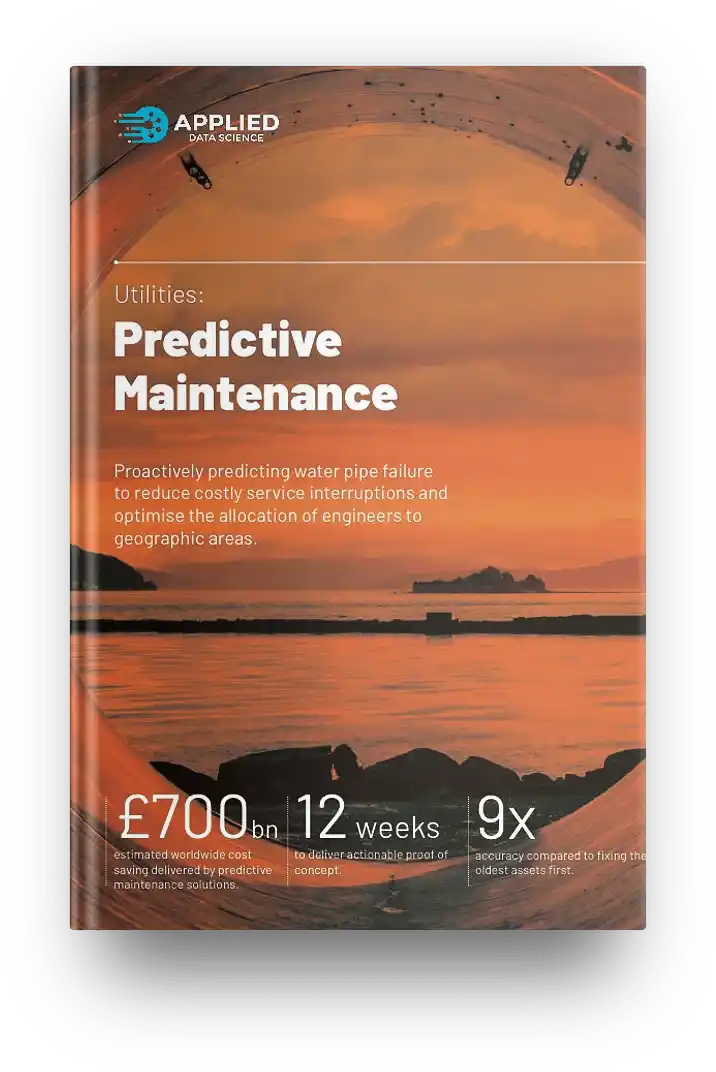
The Opportunity
Our client operates approximately 9,800 kilometres of water mains and services more than 1.8 million people. The network of pipes is diverse, with some pipes first installed over 150 years ago, and the longevity of each pipe is impacted by many features including pipe material, diameter, surrounding soil type and water pressure.
The client wanted a model that is able to predict which pipes are most likely to fail imminently, so that they can be proactively replaced with no interruption of service to the customer.
What we did
✔︎ Exploratory analysis of the pipe failure log and metadata to establish features that could be predictive.
✔︎ Built a training set containing a snapshot of each pipe on a given date and failure within a year response.
✔︎ Trained an XGBoost model to predict imminent failure.
✔︎ Built a dashboard in Tableau to how exactly where the at-risk pipes were located.
✔︎ Delivered a report outlined our methodology and instructions for updating the predictions and the model.
The Results
Our model scored an impressive 0.88 AUC on a holdout set of data, meaning it was able to predict pipe fail with high degree of accuracy. By adjusting the prediction threshold, the client could choose to be more or less risk averse, given the number of engineers available at a given time.
The Tableau dashboard showed individual pipes, overlaid onto a map of the area, coloured by risk of failure and with thickness proportional to the actual thickness of the pipe.
0.88
AUC score on the validation set
How we did it
We built a model to predict whether or not a fault will occur for a given pipe in a given year and used the score from this model to produce a prioritised list of pipes to inspect.
The XGBoost model was built in Python and was made interpretable through the use of our own 'XGBoost Explainer' package, which enables the model to output a rationale behind each prediction.
The meant that the client could see not only the percentage chance that a pipe would fail, but also 'why'. This is crucial for understanding which engineer to assign to a given pipe.
Our project report gave the client a detailed understanding of how various factors such as diameter and material impact pipe longevity and allows the operations team to plan ahead through our analysis of seasonal effects on pipe breakages.

Download our case study

Start a conversation
Take the first step by speaking with one of our data experts today.



